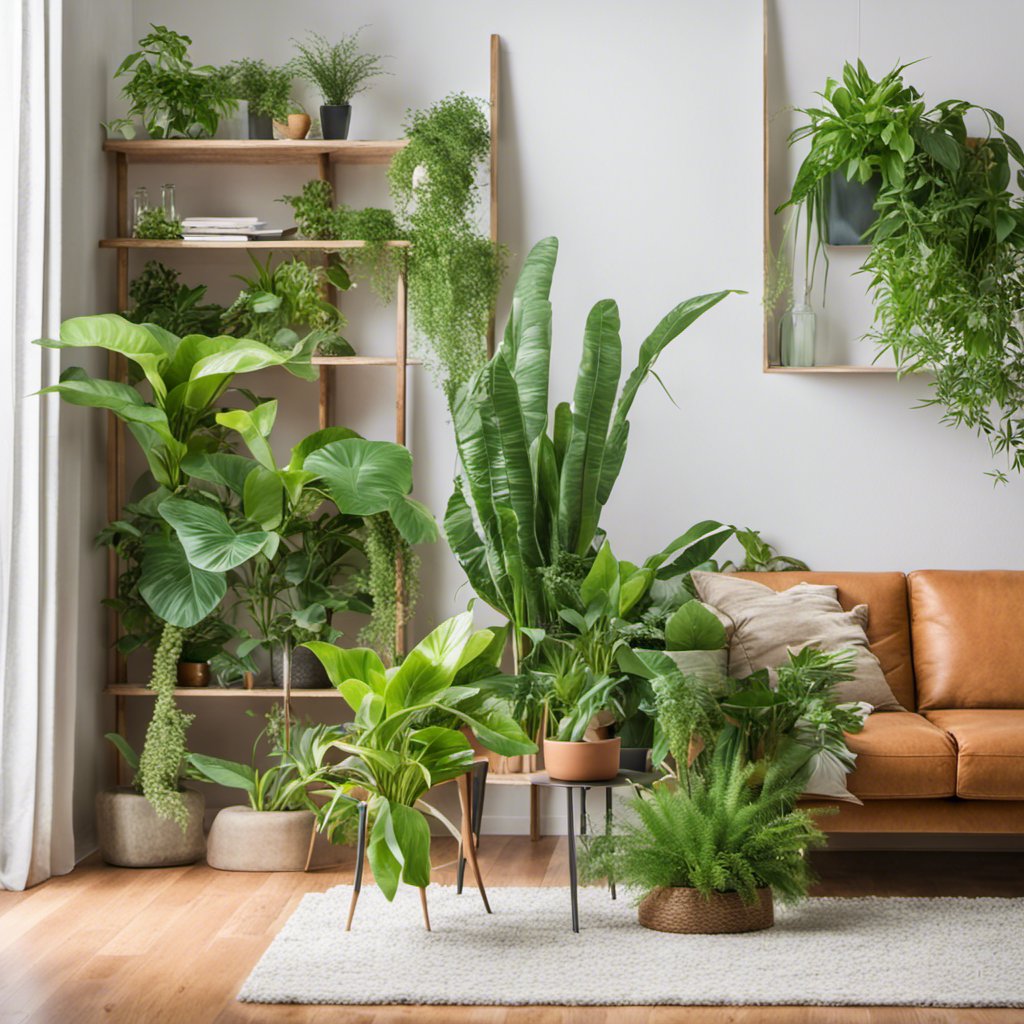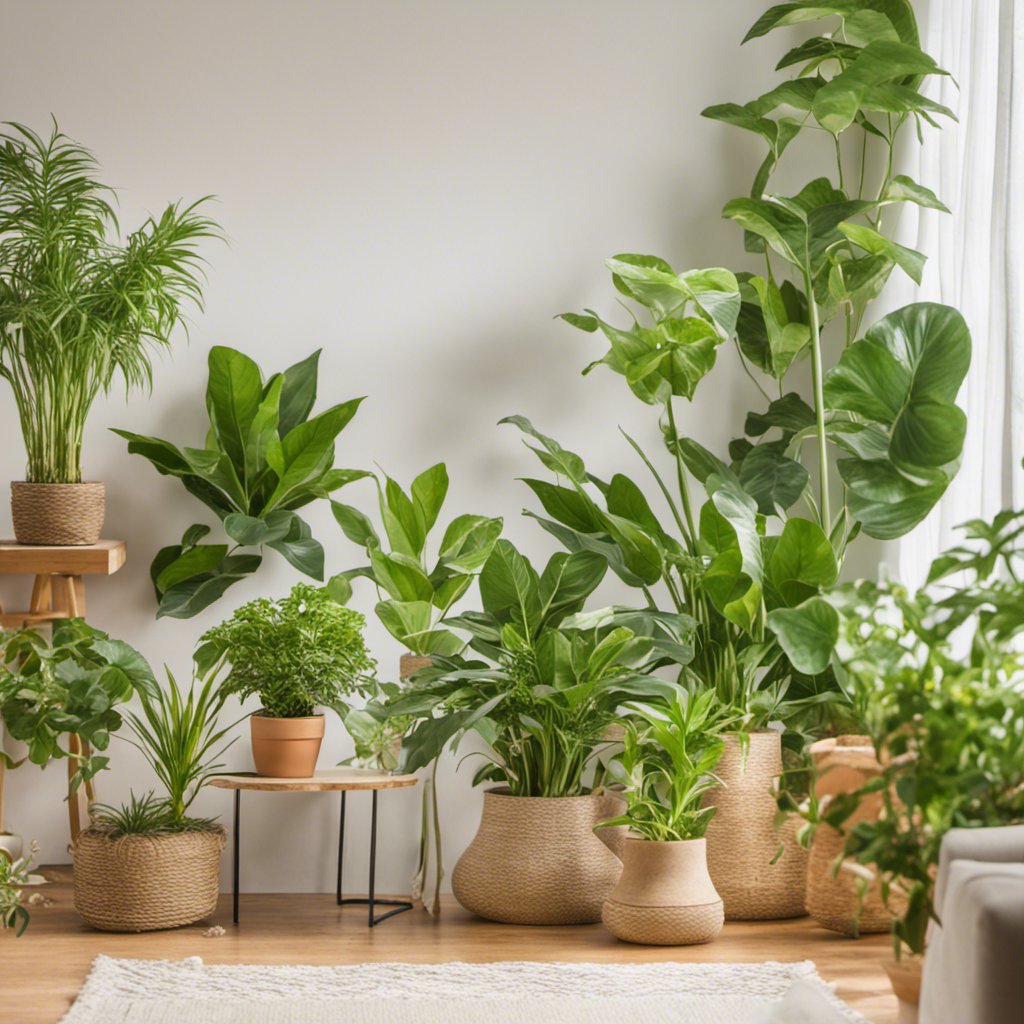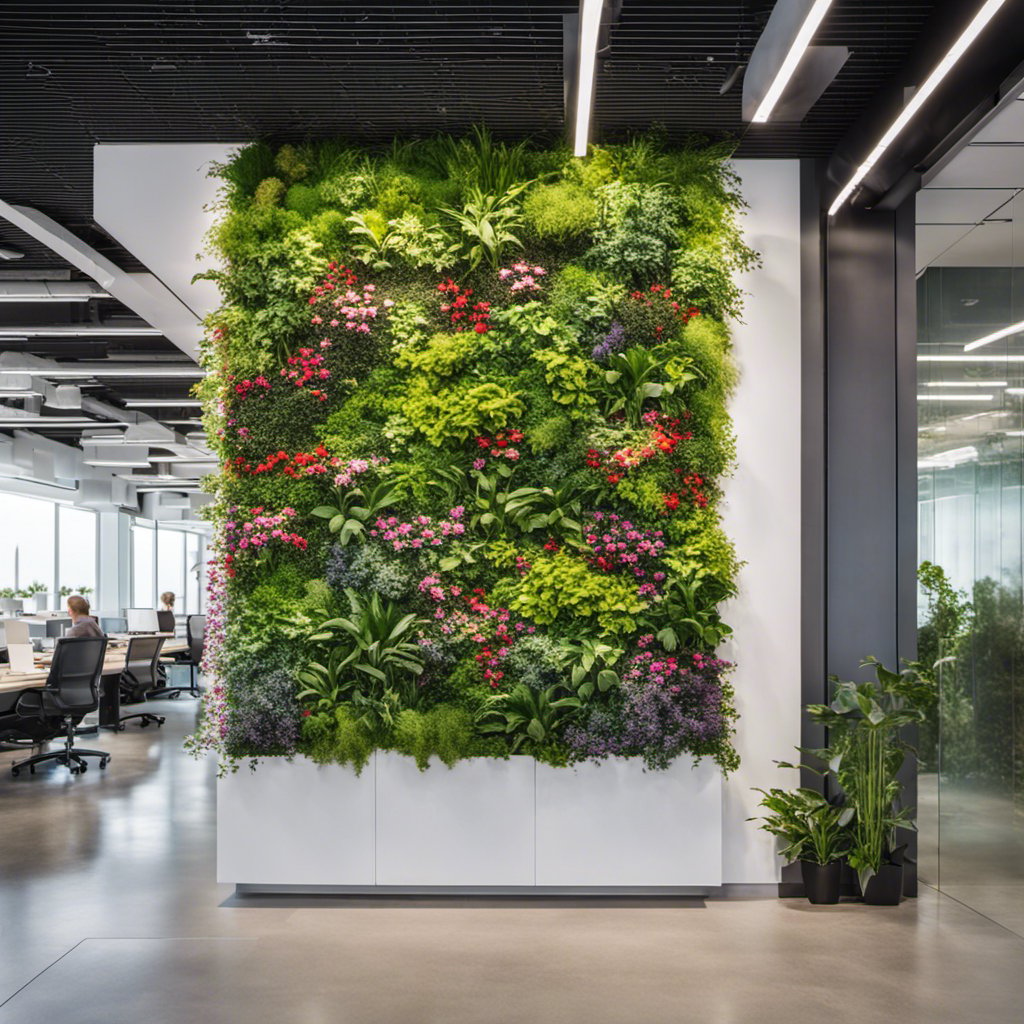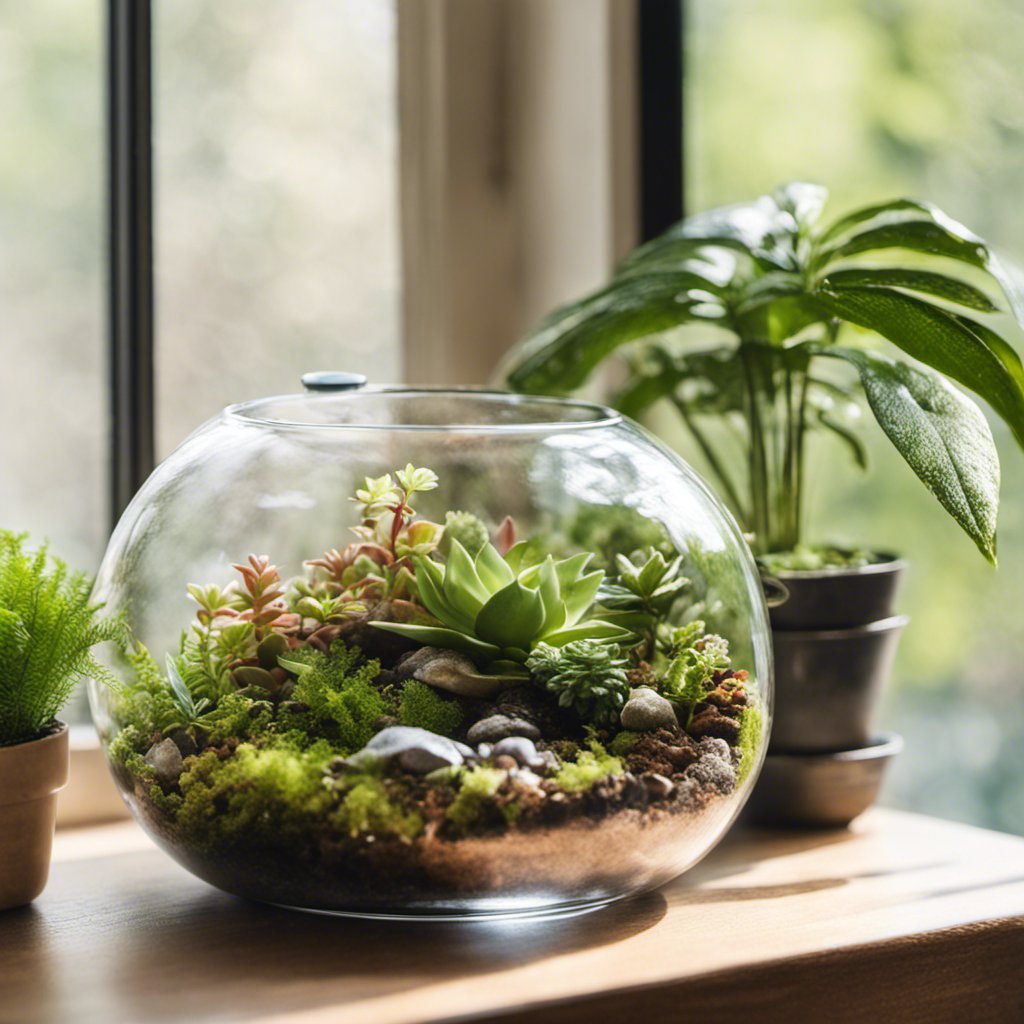Improve air quality to compensate for the modern world! Indoor air can contain up to 5 times more pollutants than outdoor air. Toxins like formaldehyde, benzene, and trichloroethylene lurk in dust, carpeting, furniture, and cleaning products. These nasty compounds degrade air quality and cause health issues ranging from headaches and fatigue to asthma and cancer.
than outdoor air. Toxins like formaldehyde, benzene, and trichloroethylene lurk in dust, carpeting, furniture, and cleaning products. These nasty compounds degrade air quality and cause health issues ranging from headaches and fatigue to asthma and cancer.
Luckily, it is easy to improve air quality by adding air-purifying plants as an easy and natural way to remove indoor air pollutants and allergens. During photosynthesis, houseplants absorb carbon dioxide and release oxygen. But certain plants excel at scrubbing specific toxins too.
In this comprehensive guide, learn which flowers, succulents, vines, and tropical plants filter out the most harmful indoor air contaminants. Discover where to strategically place these pretty natural air fresheners at home. We’ll also cover simple growing tips and FAQs. With the right plants, you can breathe easier in a cleaner, healthier living space.
Why Houseplants Improve Indoor Air Quality
Plants improve air quality through their leaves through a process called phytoremediation. As air circulates past houseplant foliage, toxins like formaldehyde and benzene get trapped and absorbed into the plant.
Specifically, the microorganisms that live on plant leaves and roots digest and neutralize gaseous pollutants. Some toxins also get incorporated into the plant’s biological processes.
During photosynthesis, plants take in carbon dioxide and release oxygen. So having lots of houseplants increases oxygen levels and improves air purity.
Some of the top toxins that air-purifying plants help remove include:
- Formaldehyde – Found in pressed wood furniture, flooring, and cleaning products. Associated with cancers and respiratory issues.
- Benzene – In paints, tobacco smoke, plastics, and detergents. Linked to leukemia and nervous system damage.
- Trichloroethylene – Used in inks, paints, and lacquers. Causes headaches and liver damage with long-term exposure.
Plants also absorb other volatile organic compounds like xylene, ammonia, and toluene. The top air-filtering plants can reduce these indoor pollutants by up to 87%!
Best Air-Purifying Plants to Improve Air Quality

Peace Lily
This tropical plant is excellent at removing mold and toxins like benzene, trichloroethylene, and formaldehyde. NASA research found Peace Lily to be one of the top air-purifying plants.
Peace lilies enjoy partial shade and weekly watering. Let the soil dry between waterings to prevent root rot. Peace lilies will wilt to show you when they are thirsty. They are easy to care for and propagate by division.
English Ivy
The trailing vines of English ivy make it perfect for hanging baskets or high surfaces. It effectively eliminates airborne mold along with benzene and formaldehyde.
English ivy grows well in bright indirect light. Water when the top inch of soil dries out and mist often in order to increase humidity. Propagate by stem cuttings. Keep vines trimmed back to control size.
Boston Fern
With long cascading fronds, the Boston fern is great for hangers and shelves. This humidity-loving plant eliminates formaldehyde and xylene from indoor air.
Boston ferns prefer bright, humid spots like bathrooms and kitchens. Keep soil moist but not soggy. Mist frequently and propagate by plant division.
Snake Plant
With upright sword-shaped leaves, the snake plant is a unique and hardy air purifier. It filters out nasty toxins like nitrogen oxide and formaldehyde.
Snake plants thrive in bright or low light spots with infrequent watering. Allow soil to dry out between waterings to avoid rot. Propagate by dividing the rhizomes or planting pups.
Areca Palm
Areca palms are one of the best plants for removing xylene, toluene, and formaldehyde. It also helps filter out carbon monoxide and trichloroethylene.
This tropical palm thrives in bright, humid conditions. Water when the top inch of soil is dry and mist regularly. Feed monthly in spring and summer. Propagate by dividing rhizomes or sprouting seeds.
Spider Plant
The spider plant is very easy to grow making it great for beginners. It absorbs airborne toxins like carbon monoxide, xylene, and formaldehyde.
Spider plants flourish in indirect light. Water when the soil is partly dry. The offshoots can be propagated in water or soil for more plants.
Golden Pothos
With its iconic trailing vines, Golden Pothos is a popular houseplant that filters formaldehyde. It is easy to grow and cascades beautifully.
Pothos thrives in bright or low light spots. Let the soil partially dry out between waterings. Mist occasionally to increase humidity. Propagate by taking cuttings.
Chrysanthemums
These brightly colored blooms are more than just a pretty face – they filter benzene, formaldehyde, xylene, ammonia, and trichloroethylene from indoor air.
Chrysanthemums love bright, indirect sunlight. Keep the soil consistently moist but not saturated. Feed with fertilizer in spring and summer. Propagate by dividing the roots after flowering.
Dracaena
Dracaena is an excellent choice for removing formaldehyde from indoor spaces. Varieties come in green, yellow, white, and purple.
Dracaenas grow well in medium light. Allow the soil to partially dry between waterings. Wipe dust off leaves every few weeks. Propagate by stem cuttings.
Ficus/Weeping Fig
With large, lush leaves, the ficus is great at removing formaldehyde from indoor air. It can grow quite large when mature.
Ficus enjoys bright, indirect sunlight. Allow soil to partially dry between waterings. Mist occasionally for humidity. Propagate by taking stem cuttings.
Growing Tips for Clean Air Plants
Caring properly for your air-purifying plants ensures they thrive. Here are some key tips:
- Let the soil dry out slightly between thorough waterings to prevent root rot. Do not overwater.
- Wipe dust off plant leaves every few weeks with a damp cloth to allow them to photosynthesize.
- Place in bright, indirect sunlight. Low-light plants can handle shadier spots. Turn to avoid one-sided growth.
- Repot annually in the spring to provide fresh soil and room for root growth. Use pots with drainage holes.
- Propagate by taking stem cuttings or dividing overcrowded plants. Pot up pups from spider plants.
Where to Place Air-Purifying Plants to Improve Air Quality
Strategically place air-purifying plants in rooms where you spend the most time or want cleaner air.
- Bedroom – Having plants in the bedroom improves sleep by increasing oxygen and humidity. Try snake plants, peace lilies, or orchids.
- Living Room – Since this is often where people gather, keep the air pure with blooming plants like chrysanthemums or orchids.
- Office – Boost concentration and productivity with plants shown to reduce stress like spider plants or aloe vera.
- Bathroom – Prevent mold growth and odors with tropical plants like ferns, peace lilies, and orchids that thrive in humidity.
- Kitchen – Absorb cooking grease and odors with plants like snake plants and philodendrons.
- Nursery – Protect little lungs with effective air purifiers like English ivy, dracaena, and spider plants.

Benefits of Air-Purifying Houseplants
Adding air-purifying plants provides many benefits beyond just removing toxins. Here are some top advantages:
- Remove harmful pollutants like formaldehyde, benzene, trichloroethylene, and xylene.
- Increase indoor oxygen levels through photosynthesis and respiration.
- Reduce exposure to asthma triggers and illness-causing contaminants.
- Lessen effects of “sick building syndrome” like headaches, fatigue, and irritation.
- Improve sleep, productivity, focus, and mood.
- Humidify and add moisture to dry, heated indoor air.
- Beautify any space with natural decor and greenery.
- Clean air without expensive or noisy mechanical filters.
- Easy to grow and maintain with proper care.
More Tips for Improving Air Quality
While plants are natural air purifiers, you can also:
- Open windows regularly to circulate fresh outdoor air inside.
- Vacuum carpets and dust surfaces often using a HEPA filter to remove allergens.
- Limit the use of harsh chemicals and cleaners. Opt for natural products.
- Monitor humidity levels and use a humidifier in dry climates to keep between 30-50%.
- Run an air purifier with a HEPA filter to remove dust, pollen, smoke, and other particles.
- Test home for mold, radon gas, asbestos, lead, and other serious toxins.
- Clean the HVAC system and change filters regularly.
- Stop smoking indoors and don’t allow idling vehicles in attached garages.
Utilize Living Walls to Improve Air Quality

In urban environments, indoor air can be extremely polluted. One creative way to combat indoor air pollution is installing a living wall . Living walls, also known as vertical gardens, are composed of plants grown vertically on a surface. This transforms blank walls into thriving gardens.
. Living walls, also known as vertical gardens, are composed of plants grown vertically on a surface. This transforms blank walls into thriving gardens.
Living walls naturally improve air quality in several ways:
- Plants absorb airborne toxins and pollutants through their leaves. This biofiltration removes harmful compounds.
- Photosynthesis by the plants releases pure oxygen into the surrounding air.
- Living walls increase humidity which helps counteract dry indoor air.
- As living walls grow densely, they can trap allergens and prevent their circulation.
Strategically installing living walls in rooms where you spend a lot of time optimizes the air purification effects…
in rooms where you spend a lot of time optimizes the air purification effects…
Living walls can be created indoors or outdoors using a variety of materials:
- Pre-made modular panels designed for vertical gardens make installation straightforward. These attach right to the wall.
- Concrete backer boards or slotted boards can be affixed to the wall to hold potted plants in place. Add shelves to double planting space.
- Metal wire cages or netting filled with soil work for lightweight living walls. Plant directly into the pockets.
- Stacked containers like plastic bottles, pans, or hanging pots can be mounted on the wall. Add drainage holes if needed.
- For outdoors, a trellis or lattice backing provides support for vines. Wood frames allow for deeper soil.
Choose plants well-suited for vertical orientation and the available sunlight. Consider:
- Succulents like sedum, hen and chicks, and aloe retain moisture in vertical spaces.
- Trailing vines like ivy, philodendrons, and pothos cascade nicely on walls.
- Air plants attach easily without soil and come in interesting shapes.
- Tropical ferns add texture and thrive in humid indoor areas.
- Mosses make living walls lush and grow dense to filter particles.
Creative living walls maximize natural air purification in any home or office!
Improve Air Quality With Mini Indoor Terrariums

Terrariums are miniature indoor gardens grown inside transparent glass containers. These self-contained ecosystems are not only fun decor – they also naturally filter indoor air .
.
The enclosed environment of a terrarium allows for air purification in a few ways:
- Plants absorb and break down air pollutants like formaldehyde through leaves.
- Increased humidity from transpiration creates cleaner air.
- Activated charcoal can be added to terrariums to absorb odors.
- Plants release oxygen through photosynthesis.
Choose small tropical plants that thrive in the warm, humid conditions inside a terrarium. Consider the following:
- Tropical ferns like rabbit’s foot ferns remain compact and filter air.
- Orchids, especially mini moth orchids, work well and come in bright colors.
- Peace Lily is a strong air purifier and does great in humidity. Select a juvenile plant.
- Peperomia varieties have thick waxy leaves. Easy to maintain and cascade.
- Trailing pothos removes formaldehyde and grows quickly. Keep trimmed back.
- Moss fills space nicely, increases humidity, and absorbs pollutants.
- Air plants attach to surfaces and purify without soil. Soak occasionally.
Monitor humidity inside the terrarium. Water minimally to avoid oversaturation. Leave the lid off for ventilation. Add a small fan for air circulation if needed.
Miniature terrarium gardens are natural, low-maintenance air purifiers perfect for desks and shelves!
are natural, low-maintenance air purifiers perfect for desks and shelves!
Conclusion
Adding any of these wonderful air-purifying plants can improve air quality in your home. They naturally filter toxins without electricity or noise! With the right care, these plants will thrive indoors and improve air purity for years to come. Strategically place them in bedrooms, common areas, kitchens, and bathrooms to boost health.
FAQs About Plants that Purify Air
How often should I water air-purifying plants?
Let the soil dry out partially between waterings. Overwatering encourages root rot. Peace lilies and pothos will wilt when thirsty. Tropical plants need more frequent watering than succulents.
How much light do indoor air-purifying plants need?
Most do well in bright, indirect sunlight. Low-light plants like pothos and peace lilies can handle shadier spots. Turn plants to prevent one-sided growth towards light.
How often should indoor plants be fertilized?
In the active growing seasons of spring and summer, fertilize monthly. Discontinue fertilizer in the fall and winter months when plants are dormant.
What are the best air-purifying plants for the bedroom?
Great bedroom plants include snake plants, aloe vera, English ivy, peace lilies, and orchids. They improve sleep by increasing nighttime oxygen.
Can plants remove allergens like pet dander from the air?
Some plants help trap allergens and toxins like pet dander on their leaves and in root systems before they circulate through the air.

